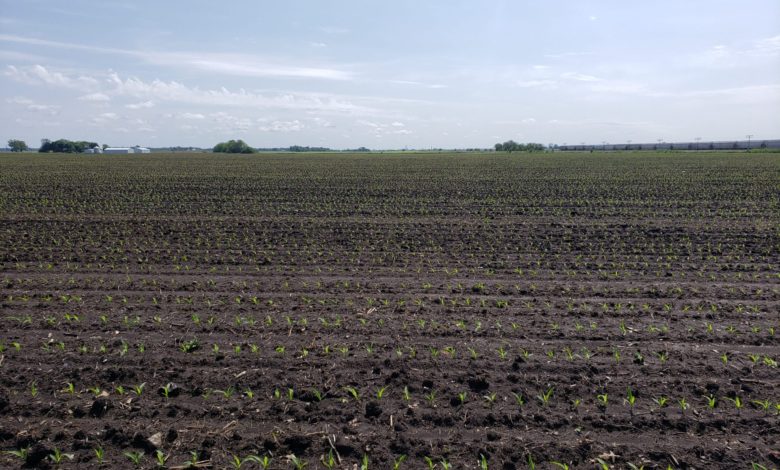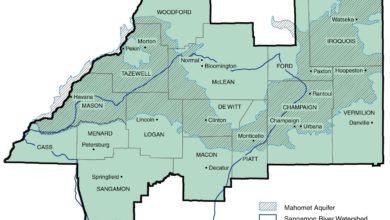To Plant or Not to Plant: That is the Question

BY DANI TIETZ
dani@mahometnews.com
Mahomet, Ill. – For many farmers in East Central Illinois, decision time is drawing near.
In a typical weather pattern, farmers throughout Champaign and Vermilion counties have completed planting their crops and are waiting for the summer heat to kick in as the calendar year turns to June.
But this spring, unusually wet conditions have hampered the planting process throughout much of the Midwest.
Farm Credit of Illinois’ Vice President of Crop Insurance and local farmer Lee Waters said farmers in this area have never seen conditions like this before.
Waters’ father began farming in East Central Illinois in 1973.
“He said 1974 was the last time they planted this late, but they did get it done,” Waters said. “This is the first time I’ve seen it where it’s been this late, and we still have more rain coming and they are not sure if they are going to complete it.
“I would say that this is the first time anybody in Central Illinois has ever dealt with this.
“Other parts of the country and other parts of the state have dealt with this, but not in Central Illinois. Ever.”
Although it only takes farmers in East Central Illinois a few weeks to get a crop in, planting opportunities have been limited.
“What’s happened this year is these continual rains: we’d have rain one day, it’d stop raining, then we wouldn’t have a long enough window to get a prolonged working period,” Waters said.
He said that farmers near Homer had the best luck this spring, getting in the majority of their crops.
A small batch of farmers were able to plant south of St. Joseph around May 6. About 10 days later, there was a five-day window where some additional crops were planted, but the cycle of rain continued through the end of May.
Waters said farmers were in the fields over the last two to three days, but with rain forecast towards the week’s end, it’s unclear if the ground will be dry enough to sustain getting the fertilizer and weed control in, too.
With bare fields from Collison to Cissna Park, from Danville to Fithian, northwest of Thomasboro to Dewey, near Mahomet and in southwest Champaign County near Seymour to White Heath in Piatt County, it’s difficult to find a stretch of land where much of the crop is sprouting.
“It’s really by the mile. You can have one area that the ground got fit enough to go, and then the other area didn’t,” Waters said.
With thousands of acres left to be planted, Illinois farmers are now considering filing a claim against their crop insurance, which not only covers yield loses and price declines, but also prevented planting.
June 5 (Wednesday) is the final day to claim the full prevented crop coverage.
Farmers can then choose to plant if they wish, losing one percent of their insurance coverage per day for 20 days.
“June 25 is the last day, and (farmers) probably are not going to plant corn after that,” Waters said.
Realistically, Waters said farmers won’t plant corn past June 15.
Waters also said that within the last week, he has talked to farmers who are looking for a 104-110 day-mature corn, as opposed to the 109-115 day-mature corn, although it is difficult to find.
“The worry is, the wetter the corn is in the fall, the more expensive and harder it is to combine and dry,” Waters said. “If there is a higher moisture content, it costs the farmer more to harvest and take to market than if it’s drier.”
Another option would be to plant soybeans in the field that had been marked for corn.
Should a farmer choose to not plant in a field this year, costs will continue to be imminent.
“Just because you didn’t plant something doesn’t mean that you get to walk away,” Waters said. “You have to till weeds or plant a cover crop to protect the ground.”
The only thing that remains known for the 2019 planting season is that the market is still a gamble.
With a soybean surplus worldwide, the benefit of soybean production in 2019 will be limited.
“Corn on the other hand, due to the fact that we have a lot of corn usage in the U.S. between animal feed, ethanol and other uses, there’s not as much left over corn than there are leftover beans,” Waters said. “So the less corn that gets planted, the higher the corn market will probably go.”
Waters said that this may incentivize farmers to plant corn later in the season because they may be able to still make more money with a lower corn yield than a normal bean yield.




